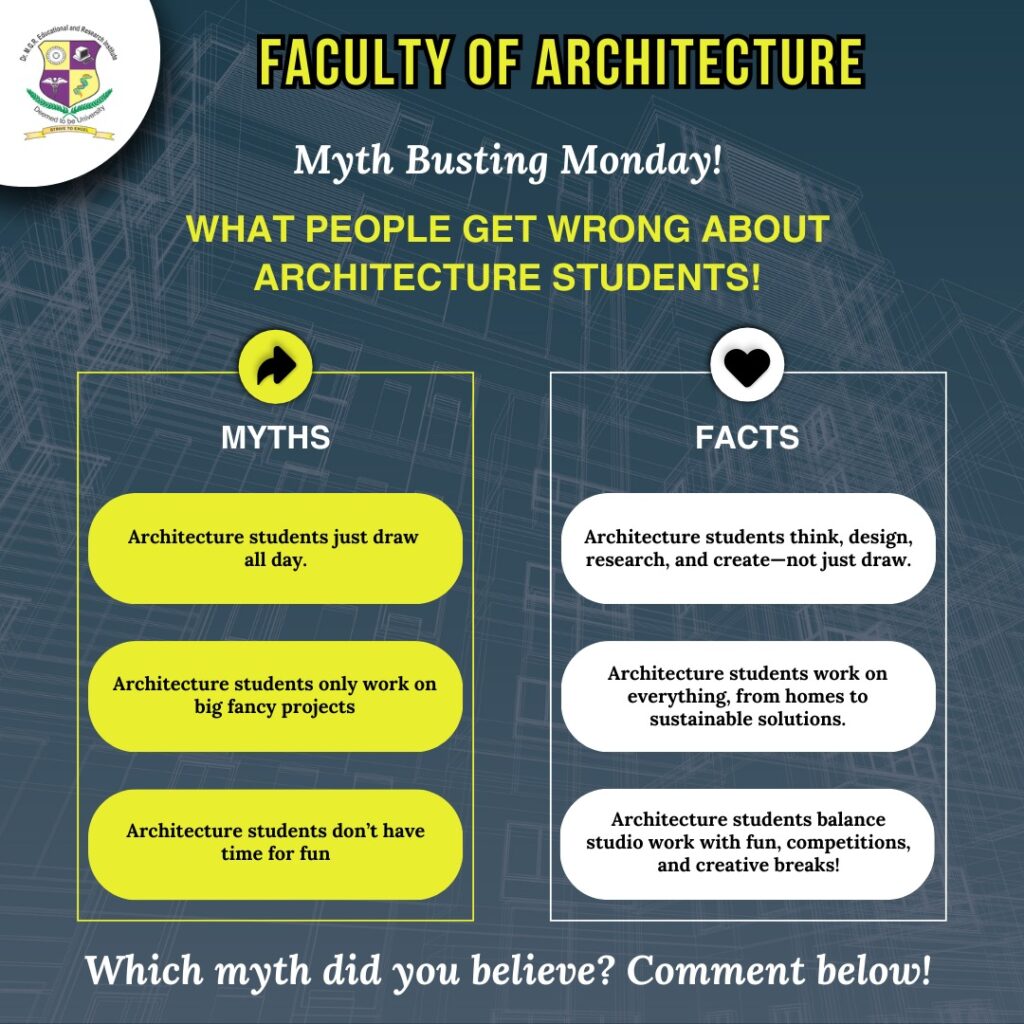
When it comes to architecture students, there’s a lot of speculation and preconceived notions that cloud the true experience of pursuing a degree in this dynamic and challenging field. From sleepless nights to relentless deadlines, architecture students are often stereotyped in ways that don’t fully capture their experiences or the diverse skill sets they develop. So, we decided to set the record straight and reveal the truth behind the myths surrounding architecture students.
Myth 1: Architecture Students Have No Social Life
The Truth: It’s true that architecture students are known for their dedication and hard work, but that doesn’t mean they live in isolation! While the workload can be intense, students find time for extracurricular activities, socializing, and even unwinding. Architecture programs foster creativity, which often extends beyond the classroom and into collaborations with peers, group projects, and campus events. Many architecture students also balance their academic responsibilities with internships and volunteering, making time for both personal and professional growth.
Myth 2: Architecture is All About Drawing and Sketching
The Truth: While sketching and drawing are crucial parts of an architect’s toolkit, the scope of architecture education goes far beyond that. Today’s architecture students learn about sustainable design, urban planning, technology integration, and building structures that respond to human needs and the environment. With the rise of digital tools, architecture students work with 3D modeling software, virtual reality, and other tech innovations that help bring their designs to life. The education is multidisciplinary, encompassing art, engineering, history, and sociology, all geared towards understanding how spaces impact people’s lives.
Myth 3: Architecture is a Career Only for Creative People
The Truth: Creativity is a key aspect of architecture, but it’s not the only skill that defines an architect. Strong problem-solving, critical thinking, and analytical skills are essential in this field. Architecture students learn how to approach complex design challenges, balance aesthetics with functionality, and navigate building codes, zoning laws, and environmental regulations. Moreover, architects must collaborate with engineers, contractors, and clients, requiring a great deal of communication and teamwork. The field is about finding solutions that blend form, function, and sustainability.
Myth 4: Architecture Students Never Sleep
The Truth: While it’s true that architecture students face intense workloads, the idea that they never sleep is an exaggeration. Yes, there are late nights spent working on studio projects, but students are also encouraged to take care of their well-being. Architecture programs increasingly emphasize the importance of maintaining a balance between academic pursuits and personal health. Many schools provide support systems to help students manage stress and time effectively. Students are learning to work under pressure, but they’re also learning how to manage that pressure with resilience.
Myth 5: Architects Only Work in Construction
The Truth: Architecture is a versatile profession that extends far beyond just designing buildings. Architects play a significant role in urban planning, landscape design, environmental design, and even interior design. Some architects specialize in creating innovative public spaces, while others focus on sustainable architecture, creating designs that reduce environmental impact. Architects can work in a variety of industries, including real estate, academia, and technology, and can even pursue careers in project management or design consulting. The possibilities are endless, and the field continues to evolve with technological advancements.
Myth 6: Becoming an Architect is an Easy Process
The Truth: Becoming an architect requires years of rigorous education and professional development. Most students pursue a 5-year undergraduate degree in architecture, followed by a graduate degree and several years of practical experience through internships or apprenticeships. Afterward, students must pass a series of licensing exams before they are fully qualified to practice. It’s a long journey, but one that shapes students into skilled professionals capable of making an impact on communities, cities, and the world.
The Truth About Architecture Students: Passion, Perseverance, and Innovation
Architecture students are some of the most driven, resilient, and innovative individuals you’ll meet. Their educational journey is challenging, yes, but it’s also incredibly rewarding. The field allows them to merge creativity with logic, design with practicality, and art with engineering. They’re shaping the built environment—creating spaces that are functional, beautiful, and sustainable.
So, the next time you think about architecture students, remember that they are more than just artists with a sketchbook. They are problem-solvers, innovators, and future leaders in the design and construction industry. And despite the long hours and demanding projects, they are also passionate about making a difference through their work.
What Myth Did You Believe?
We hope this post has shed some light on the reality of being an architecture student! Which myth did you once believe? Share your thoughts with us in the comments section, and let’s continue to break down the misconceptions surrounding the world of architecture.
At the end of the day, architecture students are creating the future, one blueprint at a time. Are you ready to explore the dynamic world of architecture?

